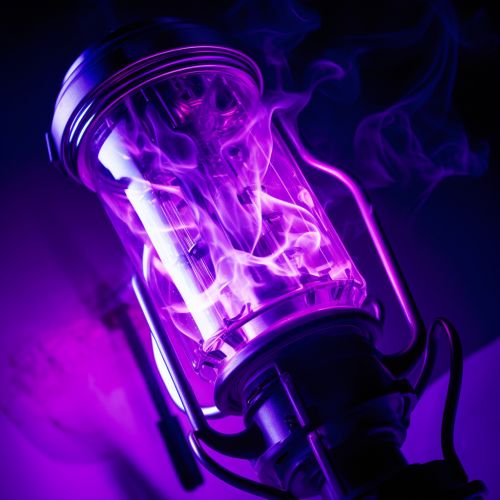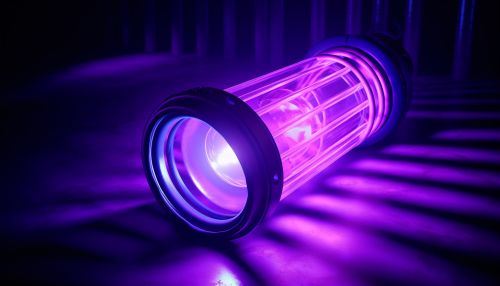Ultraviolet
Introduction
Ultraviolet (UV) is a form of electromagnetic radiation with wavelength from 10 nm (with a corresponding frequency of approximately 30 PHz) to 400 nm (750 THz), shorter than that of visible light, but longer than X-rays. UV radiation is present in sunlight, and constitutes about 10% of the total electromagnetic radiation output from the Sun. It is also produced by electric arcs and specialized lights, such as mercury-vapor lamps, tanning lamps, and black lights.


Properties
UV radiation is divided into several ranges, as defined by the International Commission on Illumination (CIE), including UVA (long wave), UVB (medium wave), and UVC (short wave). Each range has different effects and is produced in different ways. UV radiation in the UVA range is the type most commonly encountered by humans and is less harmful than UVB or UVC, but it can still cause damage, particularly to the eyes and skin.
Production and Detection
UV radiation is produced by high-temperature surfaces, such as the Sun, and in laboratories through the process of electrical discharge or other forms of energy. Detection of UV radiation is done through the use of specialized equipment, such as UV photodiodes or photomultiplier tubes. These devices convert the UV radiation into an electrical signal that can be measured and analyzed.
Effects on Human Health
Exposure to UV radiation, particularly the shorter wavelength UVB and UVC, can have harmful effects on the skin and eyes. Prolonged exposure can lead to skin aging, DNA damage, and skin cancer, including melanoma. UV radiation can also cause cataracts and other eye conditions. However, it is also used in medicine, for example in the treatment of skin conditions such as psoriasis, and for the synthesis of vitamin D in the skin.
Applications
UV radiation has many applications, including in the fields of medicine, industry, and science. It is used for sterilization and disinfection, in air and water purification, in the curing of materials such as inks and coatings, and in the detection of substances that fluoresce under UV light. UV radiation is also used in the entertainment industry, for example in black light effects.
